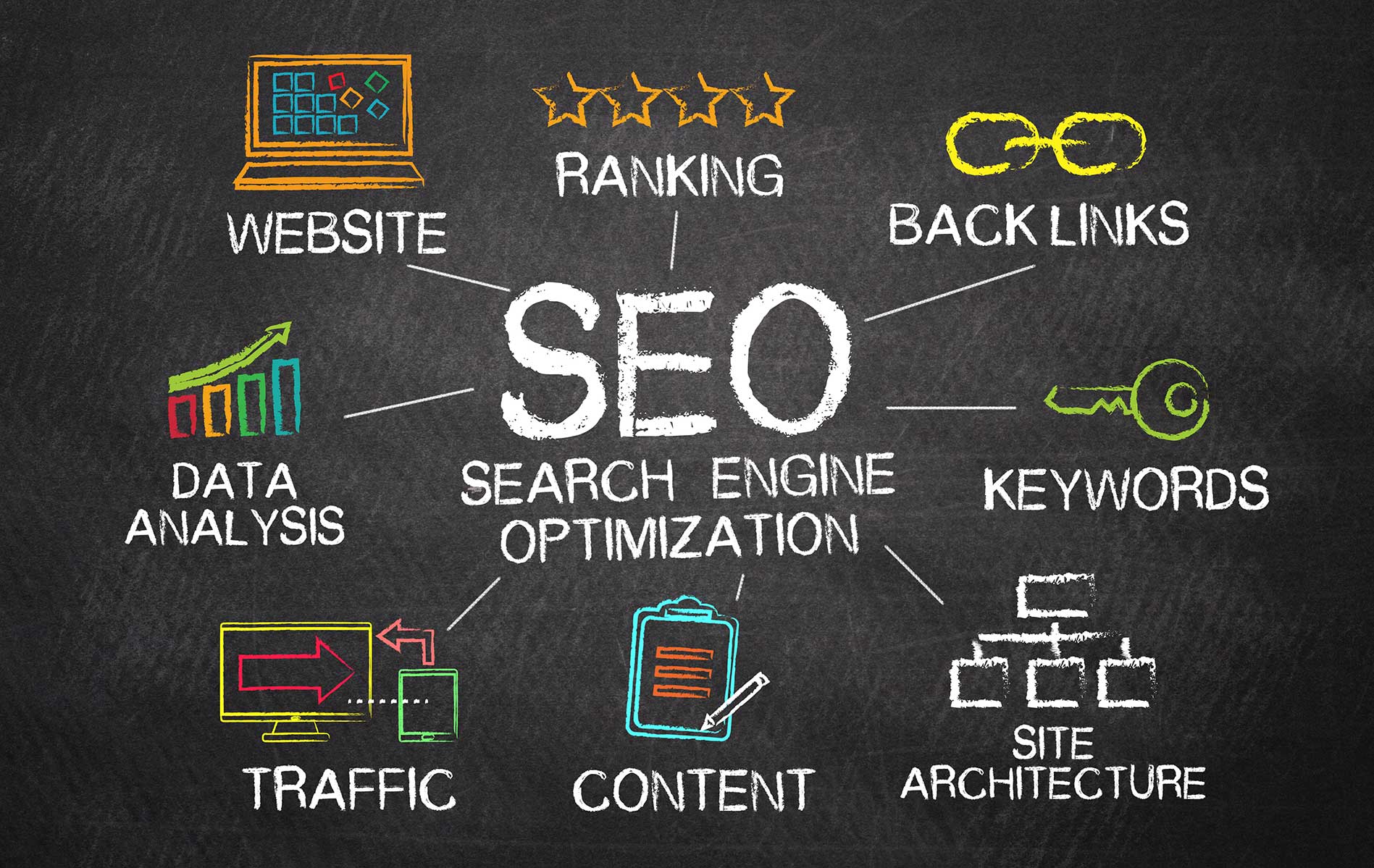Search engine optimisation is one of the most important aspects of online marketing strategies in 2023 due to the long-term stream of relevant traffic and the low cost of SEO maintenance.
Alternatively, poor search engine optimisation will ultimately leave businesses handing revenue and customers over to their competitors and needing to pay for far more expensive forms of marketing, such as pay-per-click (PPC) marketing.
For businesses and entrepreneurs new to search engine optimisation (SEO), the jargon around it can be confusing, at best. In this article, we will cover how business owners and anyone looking to improve their visibility in the SERPs can effectively move up in the search result rankings and gain the trust of potential customers. This article will also focus on how SEO and robots work and how closely related they are in the context of website optimisation and visibility on search engines.
What Are Search Engine Robots?
Robots are also referred to as engine bots, web crawlers or spiders; whatever they are called, they are forms of automated software that systematically travel across the web, exploring websites to find the sites that are best equipped to answer search queries.
Search engine bots play a crucial role in the functioning of search engines, as they continuously update the search engine's index with new and updated web pages. This allows search engines to provide users with the most relevant and up-to-date search results when they perform a search query.
If you familiarize yourself with current SEO tips, you will know how to feed the correct data to search engine bots so they can recommend your website to users who are searching for information, products, or services.
How SEO and Robots Work
As a form of automated data-collecting software, search engine bots are incredibly complicated; the good news is that you don’t need to know the ins and outs of their algorithmic anatomy; you only need to know what kind of data appeases them. However, it is crucial to note that Google and other search engines frequently change their algorithms, meaning it is important to stay up to date with all the latest SEO trends.
Search engine bots typically work by starting with a list of known web addresses or seed URLs. They visit these addresses and then follow links from those pages to discover new pages. As they visit each page, they extract information such as the page's content, meta tags, headers, and other relevant data. This information is then processed and indexed by the search engine.
Webmasters can assist search engine bots in understanding their websites by providing a robots.txt file, which instructs the bots on which pages to crawl or avoid. They can also use XML sitemaps to provide a structured list of pages for the bots to crawl.
The fundamental job of bots is to figure out how to rank and display websites in search engine results. There are multiple ways to prove that your site is of high enough quality to feature on the first page of search engine results; one of the main ways is by having other high-quality websites linked to your website.
Backlinks are the preferred mode of transport for bots as they crawl across the web.
Securing high-quality links to your website is especially important for new websites; once the bots discover the new website, they will record details of the content and the relationship to the content found on linked sites. However, it is never too late to improve the SEO of your website; the robots often revisit the same websites to check for updates.
As collecting information from every site on the web is a lengthy process and web users like to have their search results in front of them in seconds, search engines store the data collected by the robots in an index. The search engine index contains up-to-date information on which sites host relevant content on different topics.
The Good, the Bad, and the Ugly Bots
Without Google bots trawling the internet to find the sites with the most relevant information, a quick Google search wouldn’t be so simple. Web browsers would have to invest time in discerning which sites are worth exploring.
However, when bots are in the wrong hands, they can be used for far more nefarious reasons. In the past few years, spammers have found the utility in bots and discovered they can be incredibly helpful in collecting email addresses to which spam emails can be sent.
Furthermore, not everyone is happy with how SEO and robots work, as they believe it gives some websites an unfair advantage. ‘Web Scraping’ has become a prominent issue in modern online marketing.
Web scraping is the process by which web scrapers crawl websites to find good SEO content to use elsewhere on the web. As Google hates duplicated content, when your content is copied onto lower-ranking websites, your ranking on Google could be compromised too. To prevent web scraper bots from damaging the integrity of your SEO strategy, always keep an eye out for duplicated content.
There is also substantial concern over search engines cashing in by displaying ads at the top of search engine pages, which always appear above the more helpful and relevant pages from content pages.
SEO Tips
On-Page SEO
One of the quickest and simplest ways to improve your SEO strategy and your visibility on search engines is to improve the on-page SEO on your website. Firstly, find the best keywords to implant on your website in strategic places, such as your title tag.
SEO TIP TO PREVENT KEYWORD STUFFING: Focus on high-quality content, give each page a primary keyword and incorporate the keywords naturally within your content. Place them in key areas such as titles, headings, meta tags, and the opening paragraph. Also, look at diversifying your content and monitoring your keyword density.
If your website is light on relevant content, ramp it up while ensuring all the content is relevant, helpful and high-quality. You will also want to beware of keyword stuffing, which Google bots frown upon. If you are not familiar with the term Keyword stuffing it is the practice of excessively and unnaturally repeating keywords in your website's content in an attempt to manipulate search engine rankings.
Latent Semantic Indexing (LSI) keywords are also proving to be effective in improving on-page SEO. LSI keywords are words or phrases related to your main keywords. So, for example, if your primary keyword is coffee, your LSI keywords could be espresso machine, barista or coffee beans.
Technical SEO
For the majority of websites, technical SEO shouldn’t be an issue. However, if your SEO is still poor after securing high-quality backlinks and doing everything you can on the on-page SEO side, consider running a few checks.
The main technical SEO issues include:
- Site Speed: Slow-loading websites can negatively impact user experience and search engine rankings. Optimizing page load times by compressing images, minifying code, and utilizing caching techniques can help improve site speed.
- Mobile Friendliness: With the increasing use of mobile devices, it's crucial for websites to be mobile-friendly. Websites that are not optimized for mobile devices may rank lower in mobile search results.
- Crawlability and Indexability: Issues like broken links, duplicate content, or improper use of robots.txt directives can hinder search engine bots from accessing and understanding your site's content.
- URL Structure: Clear and descriptive URLs are important for both search engines and users. URLs should be readable, include relevant keywords, and follow a logical hierarchy. Avoid using dynamic parameters or excessively long URLs.
- Canonicalization: This refers to the process of specifying the preferred version of a webpage when there are multiple versions available (e.g., www vs. non-www or HTTP vs. HTTPS). Failure to implement canonicalization properly can lead to duplicate content issues and diluted search rankings.
- Schema Markup: Implementing structured data markup (such as Schema.org) helps search engines better understand the content on your website. This can enhance search result displays with rich snippets and improve visibility in certain types of search results, like events, reviews, or recipes.
- XML Sitemap: XML sitemaps provide search engines with a roadmap of your website's pages, helping them discover and index your content more efficiently. Ensure your sitemap is up to date, accurately reflects your site structure, and includes important pages.
- SSL and HTTPS: Having a secure website with an SSL certificate (HTTPS) is not only important for user trust and data security but can also impact search rankings. Search engines tend to prioritize secure websites, so it's recommended to migrate to HTTPS if you haven't already.
- Structured Data: Utilising structured data markup allows you to provide additional context about your content to search engines. This can lead to enhanced search results, such as rich snippets or knowledge graph information, which can improve visibility and click-through rates.
- Pagination and Pagination Links: If your website has paginated content, such as blog archives or product listings, proper implementation of pagination and pagination links is crucial. Using rel="next" and rel="prev" tags helps search engines understand the sequence and relationship between paginated pages.
These are some of the main technical SEO issues to consider. It's important to regularly do an SEO audit and optimise your website's technical aspects to ensure optimal performance and visibility in search engine results.
If you cannot fix any technical issues with your SEO yourself, then it would be beneficial to your business to reach out to a professional SEO team to help you resolve these kinds of errors. Once your SEO strategy is implemented, you will notice the benefits for your brand online as a steady stream of traffic makes its way to your website.
By tackling technical SEO issues, you will also improve your bounce rate. A high bounce rate won’t only damage your profit margins, it will also damage your SEO ranking. If Google notices that when visitors load your webpage and quickly bounce back to the search engine results, they will take this as a sign that your website isn’t worth recommending to other visitors.
In Conclusion
SEO and search engine robots are interconnected. SEO practices help websites optimise their content, structure, and technical elements to make them more accessible to search engine robots no matter who your market is and whether you are doing national or local Gold Coast SEO. By implementing SEO techniques, websites can increase their visibility, attract organic traffic, and improve their chances of ranking higher in search engine results pages.











